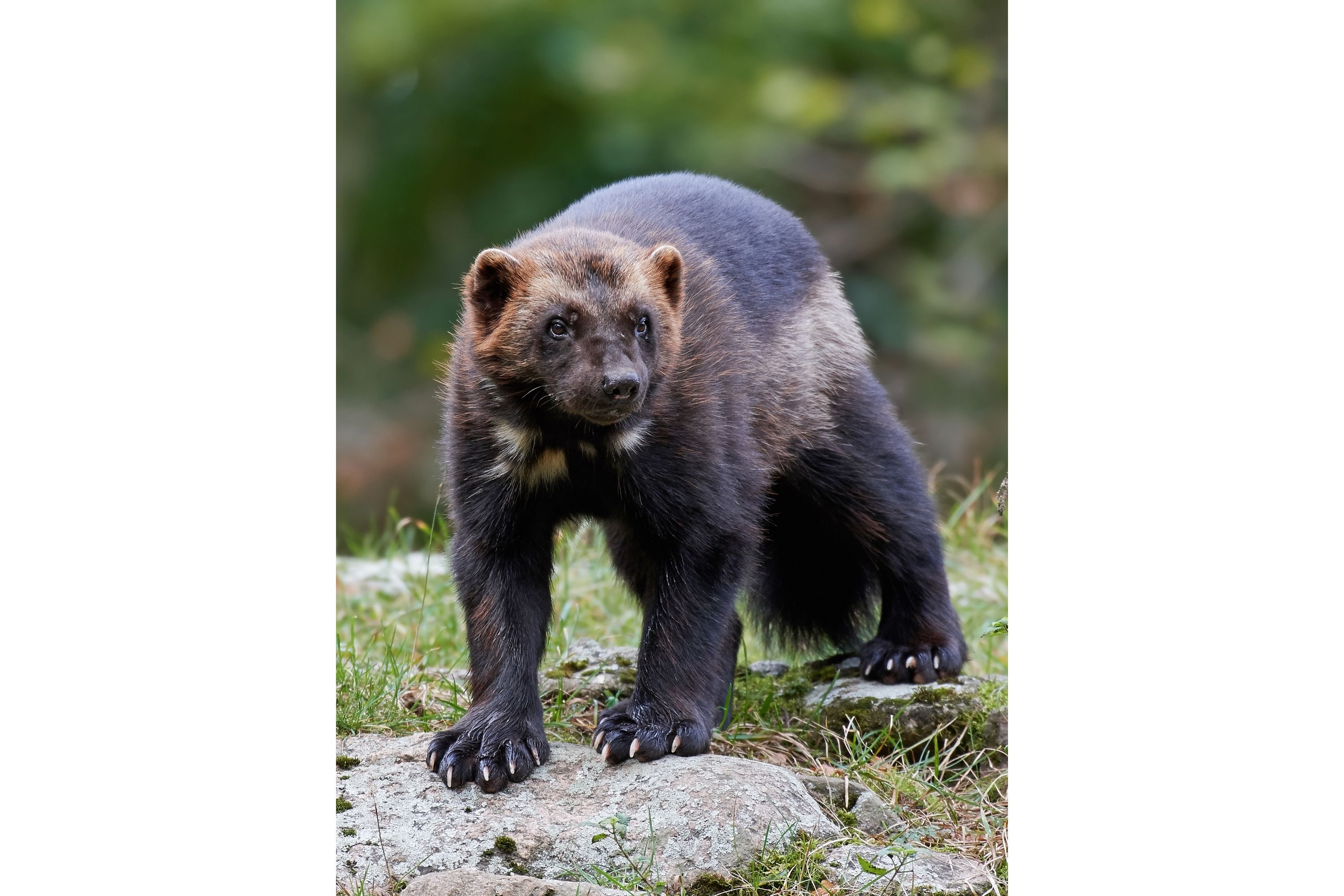Wolverine
(Gulo gulo)

Description
The wolverine (/ˈwʊlvəriːn/), Gulo gulo (Gulo is Latin for "glutton"), also referred to as the glutton, carcajou, or quickhatch (from East Cree, kwiihkwahaacheew), is the largest land-dwelling species of the family Mustelidae. It is a muscular carnivore and a solitary animal.The wolverine has a reputation for ferocity and strength out of proportion to its size, with the documented ability to kill prey many times larger than itself. The wolverine is found primarily in remote reaches of the Northern boreal forests and subarctic and alpine tundra of the Northern Hemisphere, with the greatest numbers in Northern Canada, the U.S. state of Alaska, the mainland Nordic countries of Europe, and throughout western Russia and Siberia. Its population has steadily declined since the 19th century owing to trapping, range reduction and habitat fragmentation. The wolverine is now essentially absent from the southern end of its European range. Anatomically, the wolverine is an elongated animal that is low to the ground. With strong limbs, broad and rounded head, small eyes and short rounded ears, it most closely resembles a large fisher. Though its legs are short, its large, five-toed paws with crampon-like claws and plantigrade posture enable it to climb up and over steep cliffs, trees and snow-covered peaks with relative ease. According to some sources, Eurasian wolverines are claimed to be larger and heavier than North American, with average weights in excess of 20 kg (44 lb). However, this may refer more specifically to areas such as Siberia, as data from Fennoscandian wolverines shows they are typically around the same size as their American counterparts.It is the largest of terrestrial mustelids; only the marine-dwelling sea otter, the giant otter of the Amazon basin and the semi-aquatic African clawless otter are larger—while the European badger may reach a similar body mass, especially in autumn. Wolverines have thick, dark, oily fur which is highly hydrophobic, making it resistant to frost. This has led to its traditional popularity among hunters and trappers as a lining in jackets and parkas in Arctic conditions. A light-silvery facial mask is distinct in some individuals, and a pale buff stripe runs laterally from the shoulders along the side and crossing the rump just above a 25–35 cm (10–14 in) bushy tail. Some individuals display prominent white hair patches on their throats or chests.
Taxonomic tree:







